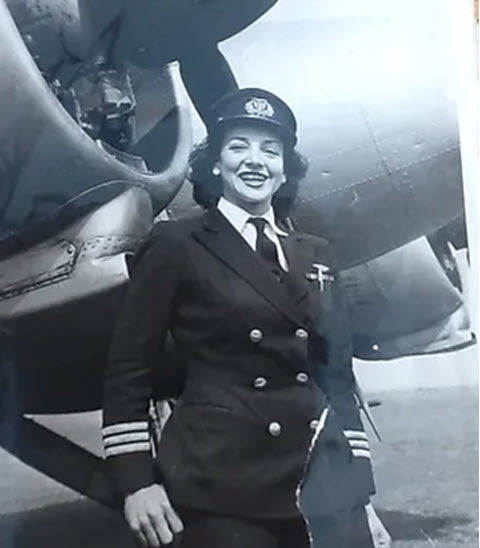How An Airplane Lands Almost A Day Before It Took Off!
Well, yes, and this is a true story!
Aircraft Lands 17 hours 30 Minutes Before Takeoff
What?Has someone built a time machine?
No, but it is true, and this is the story as related by the pilot, Major David Peters:
"I am really tired of hearing the “LA speed story” so I thought I would relay a mission that gives real perspective to the speed of the Blackbird.
We were TDY to Det. 1 at Kadena AB, Okinawa. One of the birds was scheduled for swap out and my backseater, Ed Bethart, and I were chosen to fly it home.
The replacement came in on Friday and we were scheduled to leave early Saturday morning.
So, in true Habu tradition, we welcomed the incoming crew and then went to happy hour Friday evening at the officers club.
We got up Saturday morning and got ready to go home. Departure was scheduled for 10:00 am local time. Everything went well and we departed right on time.
We headed out to do a pass through the Korean DMZ, then onto the tankers in the Sea of Japan. After a good refueling and climb out, headed for the Sea of Okhotsk and the Kamchatka peninsula of Russia.
From there onto more tankers off Adak in the Aleutian Islands. Another good refueling, and then on to Beale AFB California.
We arrived with a low approach, pulled up into a closed pattern, and landed.
Following de-suiting and debriefing, we deposited our classified flight documents, jumped in a car, and arrived at the officers club for Friday night happy hour at 16:30 local time, some 17 1/2 hours before we left Kadena.
Try that in any aircraft other than the SR-71.
Besides, this is actually a true story."
So, how did they do this?
The Aircraft Flown
The SR-71, unofficially known as the “Blackbird,” was a long-range, advanced, strategic reconnaissance aircraft.
It was developed and built in the famous Lockheed Martin "Skunk Works" run by "Kelly" Johnson.
This is a long-range, high-altitude, Mach 3+ strategic reconnaissance aircraft that was operated by both the USAF and NASA.
The SR-71 entered service in January 1966 and continued to operate until its retirement in 1999.
It holds the world speed record as the fastest, air-breathing, manned aircraft in the world!
The SR-71 was designed for flight at over Mach 3 with a flight crew of two in tandem cockpits, the pilot in the forward cockpit, and the reconnaissance systems officer operating the surveillance systems and equipment from the rear cockpit and directing navigation for the mission flight path.
Finished SR-71 aircraft were painted a dark blue, almost black, to increase the emission of internal heat, and to act as camouflage against the night sky.
The dark color led to the aircraft's nickname "Blackbird".
David Peters, SR-71 Blackbird Pilot
David Peters and his rear-seater, Ed Berthart, were based at Kadena Air Base in Kadena, Japan. It is the hub of airpower in the Pacific, and home to the 18th Wing and a variety of associate units.
David Peters was an SR 71 pilot who was accepted into the program in 1976.
He is originally from Tacoma, Washington.
He first saw the SR-71 in 1967; at that time he was flying an F-4, had a fuel problem, and had to land at Navy Fallon in Nevada.
It was there that he first saw something he had never seen before: an SR-71!
It just so happened that John Storie and George Bull (both SR-71 pilots) were flying the” B “model, and also had a fuel problem and had to land there.
Dave told his backseater, “Someday I’m going to fly that plane.”
And that day finally came.
He was assigned to fly SR-71s out of the Kadena Air Force base in Japan.
The following is a very interesting story about Major Dave Peters.
The Koren Kolligian, Jr. Trophy
Not only did Peters get to fly the SR-71, but he also managed to save a crippled SR-71, and for that was awarded The Koren Kolligian, Jr. Trophy.
Here is the Citation which accompanied the award of the Koren Kolligian, Jr. Trophy to him:
"On April 28, 1979, Major David M. Peters distinguished himself by exceptional airmanship in coping with a complex multiple-engine emergency situation in an SR-71A aircraft.
During the descent from an overseas operational sortie, the right engine was shut down because of an engine system malfunction. Upon reaching traffic pattern altitude, the left engine oil pressure began to fluctuate and the oil quantity started to deplete. Upon approaching the airfield it became necessary to shut down the left engine.
Major Peters immediately restarted the right engine and set up the SR-71A for a visual approach to the airfield.
The right engine provided little additional thrust because of its continued erratic performance; however, by exceptional aerial skill, Major Peters was able to successfully land his crippled SR-71A aircraft with only one partially operating engine.
The professional competence, timely and decisive actions, and superior airmanship exhibited by Major Peters saved a valuable reconnaissance aircraft and reflected great credit upon himself, the Strategic Air Command, and the United States Air Force."

Major Peters continued to fly aircraft in the USAF until 1986 when he retired.
SR-71 Details
This amazing aircraft was normally flown at 80,000 feet and could survey 100,000 square miles of the earth's surface each hour.
Over the years many countries tried to shoot down one of these aircraft. Over 1,000 missiles were launched against the SR-71s, but none were ever successful.
Once the reconnaissance systems officer detected a missile launch all the pilot had to do was increase speed and outrun the missile!
Be sure to check out Col Richard Sheffield's daughter's Facebook Page "Habubrats" for some awesome Blackbird photos and stories.
In the meantime, keep your eyes safe and focused on what's ahead of you Hersch!


Please be sure to share "How An Airplane Landed Almost A Day Before It Took Off!" with your friends on Facebook and Twitter!





Leave a comment
This site is protected by hCaptcha and the hCaptcha Privacy Policy and Terms of Service apply.